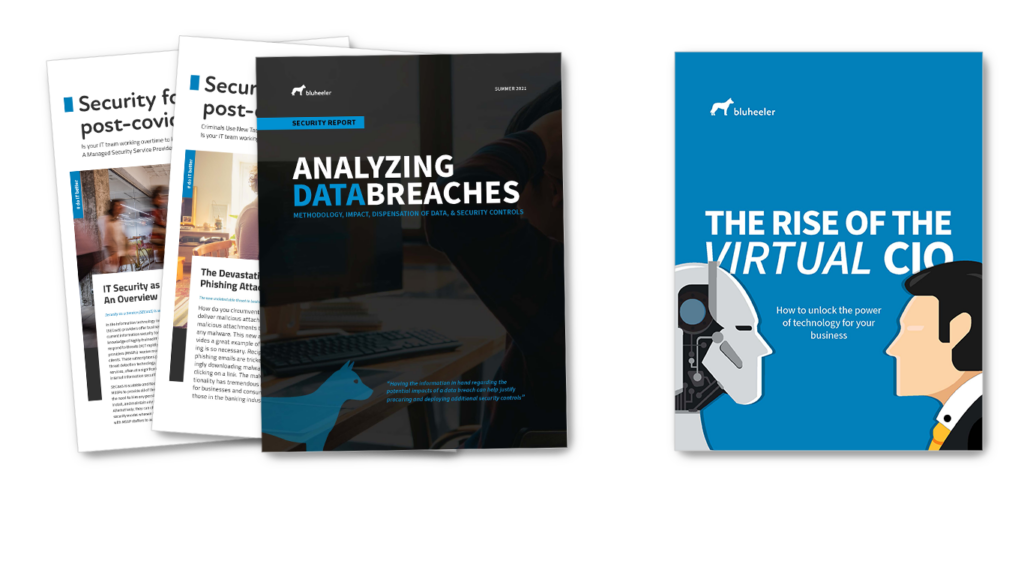Estimated reading time: 4 minutes
As 2020 comes to a close, many small businesses are realizing that COVID-19 will be with us for a while longer. Remote work was already a rising trend, and it now stands to be a permanent arrangement in many workplaces. Unfortunately, remote workers often lack adequate cybersecurity and equipment. If not handled, these situations can lead to downtime and lost revenue. How can small businesses increase their cybersecurity to keep their remote workers safe and productive?
What are the problems with remote work?
Your company network is likely much more secure than a home network. Most residential ISPs simply don’t offer as many protections. Your remote workers might even be connecting via an unsecured network, which means hackers can more easily intercept the data that’s being transmitted.
Teams with remote workers also tend to rely on cloud-based platforms such as Dropbox and Google Drive. While these programs are password-protected, they’re still vulnerable to cybercriminals. Worse, these platforms’ “share links” options often grant full access to anyone who obtains them. If your remote workers are careless with these links, your sensitive information could fall into the wrong hands.
Finally, remote workers may struggle to troubleshoot problems with their devices or software. Issues that could easily be resolved with a quick visit from the onsite IT team now take longer to fix. That situation is a drain on productivity.
Find out if remote workers putting your business at work.
How can you promote cybersecurity for remote workers?
No matter where your team works, they are vulnerable to cybercriminals. It is a basic risk of using the Internet. However, that doesn’t mean you can’t put protective measures into place. Remote workers are particularly susceptible to cyber attacks for several reasons:
- Accessing company systems through less secure networks.
- Relying on emails, Zoom meetings, and project management systems to share information.
- Using personal devices that don’t have robust security measures.
In a perfect world, you could issue company devices with a full security suite to every team member. In the real world, that’s usually not realistic. That’s why it’s important to secure data in every way possible. Use email encryption, VPN access, and device/network restrictions to limit cybercriminals’ ability to attack your remote workers. Install phishing detection, spam filters, and training to help your team avoid scams. Also, discourage remote workers from using their personal accounts (e.g. Gmail, Dropbox) to conduct business.
Finally, monitor all traffic on your company’s network. Red flags include failed login attempts, bot-like activity on your website and portals, and malicious IPs interacting with your site. A strong cybersecurity plan can stop these threats before they become a problem.
Learn how to survive losing your work phone!
How can you resolve IT problems from a distance?
It can be challenging to help remote workers with their devices or network connection. If they aren’t using company devices, there is often no way to “remote in” for IT support. However, you’re not without options.
A modern IT department or a managed IT security services partner should be able to monitor all hardware and software used by your team, even if the devices don’t belong to your company. One solution is to require remote workers to connect to your company’s network via a VPN. This way, any malicious traffic can be identified and stopped in its tracks, and your IT team can check for connectivity issues and other common problems.
You should also have your remote workers use company accounts on various SaaS platforms. This is not only better for cybersecurity, but also allows your IT team to provide software support. If your remote workers are scattered across different email providers, file-sharing services, etc., it will be that much harder to troubleshoot problems.
Finally, create a fallback structure. This is particularly important for remote workers, who are often the first ones affected when the primary network goes down. Make sure there is a backup system that uses a nationwide LTE network.
Remote work doesn’t have to be an IT nightmare. With a few simple rules and robust systems in place, you can keep your team connected and productive no matter where they are. As with any sort of digital workplace, prioritize your security measures, and always have a plan B. Even after the pandemic ends, work-from-home arrangements will remain. Act now to make your small business tech-enabled and cyber-secure.
- Are Your Remote Workers Putting Your Business at Risk?
- Welcome
- Support
- How to Survive Losing Your Work Phone
- The Top Advantages of Managed IT Service






